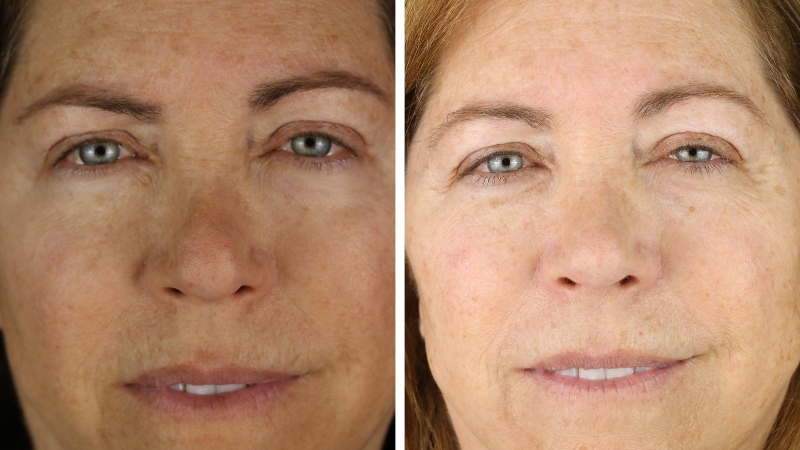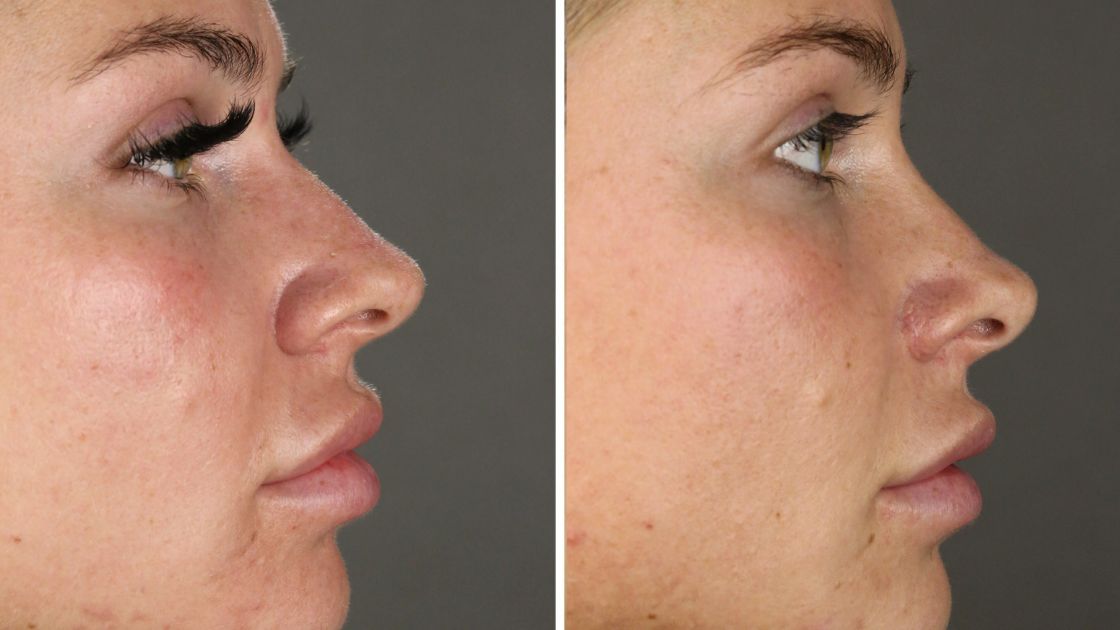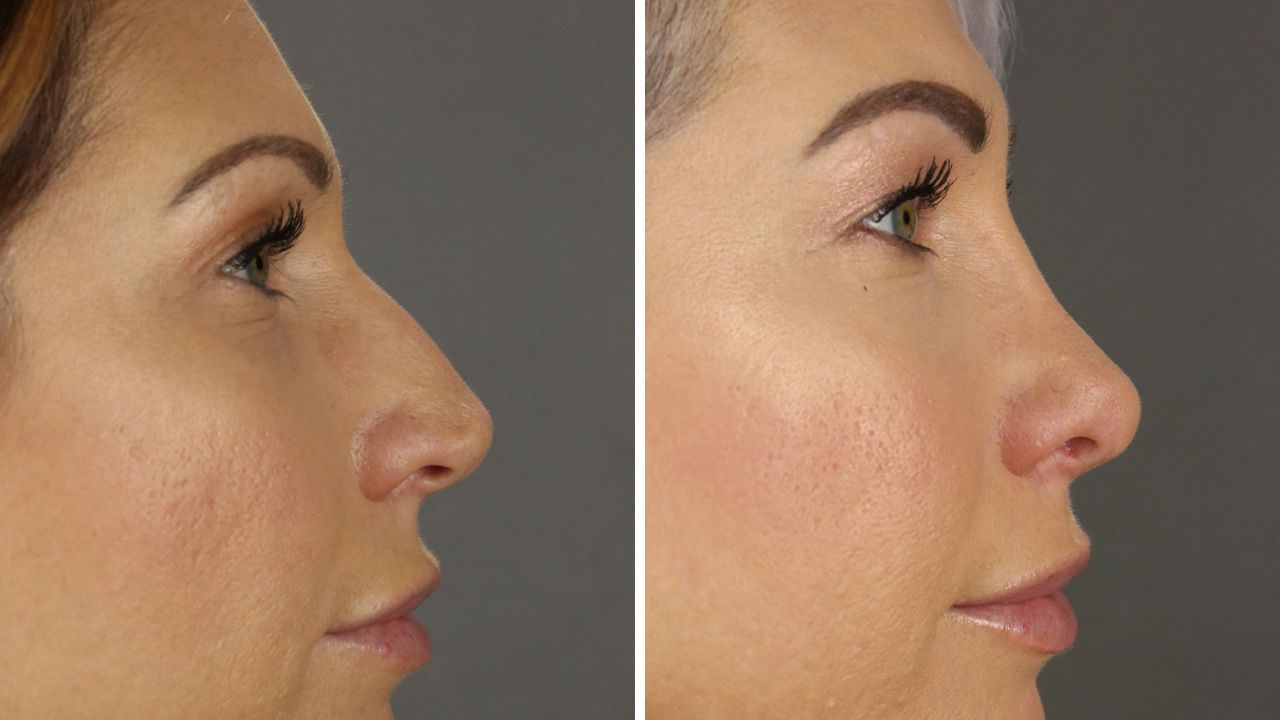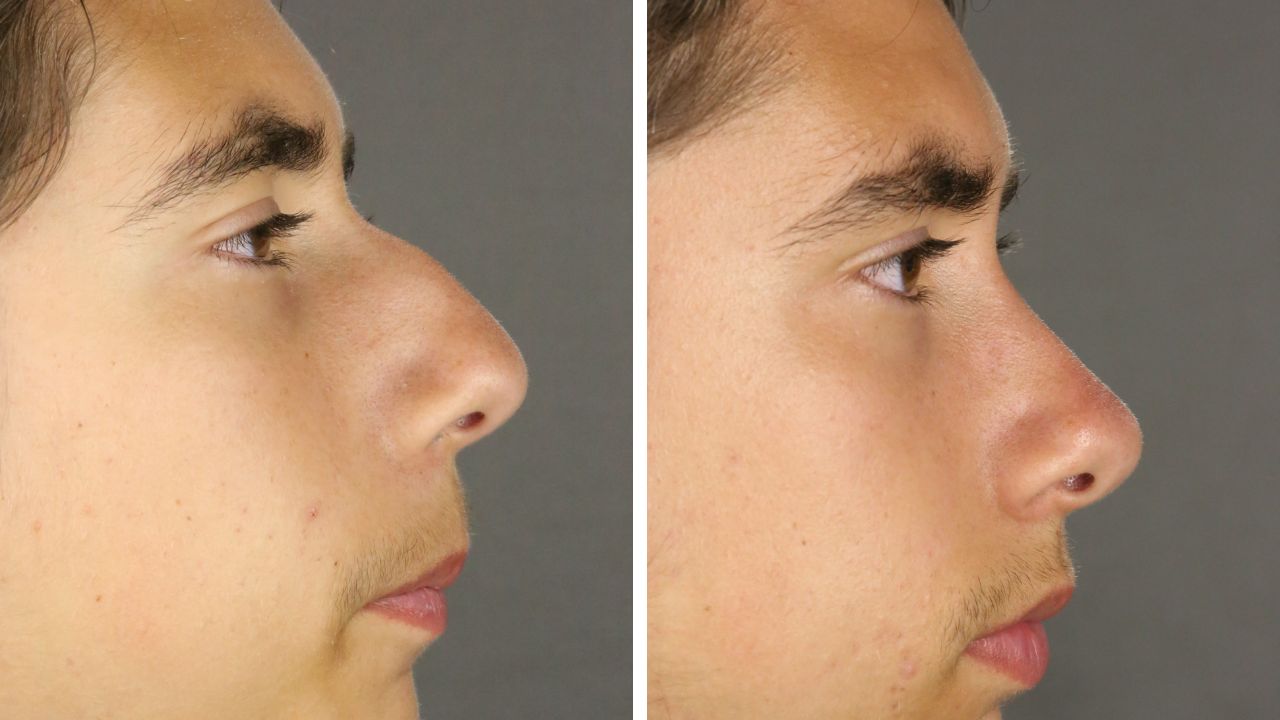The patient is a 16 year old who noted the presence of a “bump” on her nose. On examination of the patient’s face and nose, there was a significant bump in the midnose that was creating disharmony within the face. The midnose was also slightly wide from the front view and, although the bump on the side view made it look like the tip was pointing slightly downward, there was a 90 degree angle between the upper lip and the lower portion of the nose. The bump on the nose was positioned relatively high. This disrupted the smooth lines one would like to see that extend from the eyebrow to the nasal tip. The nostrils were of good shape but the sharpness of the tip and the bump both worked together to make the sides of the nostrils look like they were flaring.
The Plan
After discussing the alternatives with the patient, we decided to take the bump down so that the tip was slightly projecting past the imaginary line proceeding down from the bump area and that this would accentuate and harmonize with her facial features. The midportion of the nose would also be narrowed to make the nose smaller, to bring the parts of the nose into harmony with each other and to harmonize with the face. The plan for the tip part of the rhinoplasty included very slightly rotating the tip upwards and softening the tip to remove harsh angles. The upward rotation of the tip would serve to not only to soften the nose and bring balance but to shorten the nose slightly (distance from the eyes to the tip as seen on the side view of the rhinoplasty before and after photos). Shortening the nose would bring the length of the nose into harmony with the shorter height of the face. And softening the tip would create less tension and remove sharp angles in the tip, bringing curviness to the tip and therefore harmonize less with the sharp angles of the nostrils and make the nostrils look less sharp.
Rhinoplasty Results
When the patient was seen the next morning, she could see that the tip was improved despite the swelling of the tip and the splint. Five days later the splint was removed and the patient was very excited that her nose looked “a lot different without the bump”. As can be seen from the before and after photos, the nose appears more soft and natural and matches the proportions of the face. There is a slight up tilting of the tip but the nostril only shows slightly more and in a way that brings evenness to the parts of the nose. This patient was not that tall but rhinoplasty surgeons are sensitive to the fact that rhinoplasty surgery can make the nostril more apparent, especially in tall patients where others may be looking up towards the nostrils and the base of the nose.
A Word on the Nasal Airway
This patient had no problems with breathing or trouble getting air through the nose. Rhinoplasty surgery does not generally affect airflow going through the nose because once the air goes into the nostrils it goes downward. So doing surgery on the structure of the upper nose does not affect air flow. But during rhinoplasty, care must be taken to permit adequate support in certain areas, like the nostrils. This need to retain adequate support for breathing restricts the number of different things we can do with the nose aesthetically but we are still able to make change inpatients that are gratifying and even life altering.







